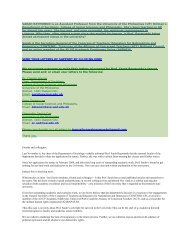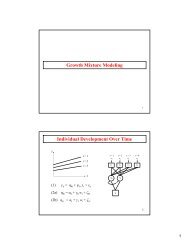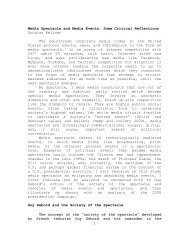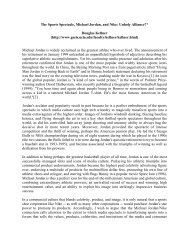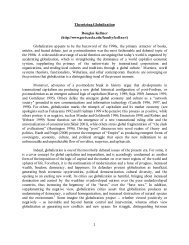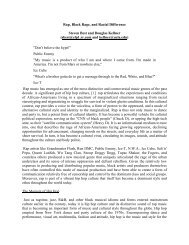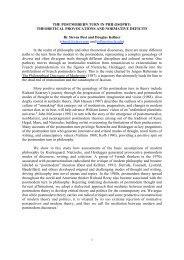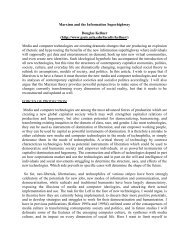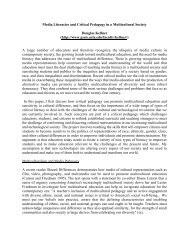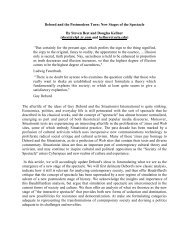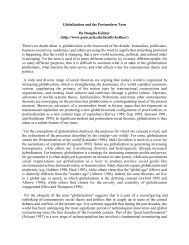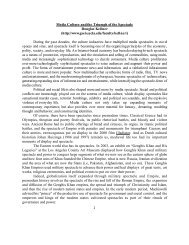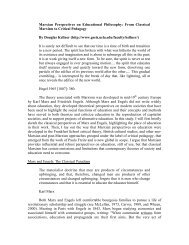Rachel Leff and Rachel Longaker IS281 Professor Maack ... - Ucla
Rachel Leff and Rachel Longaker IS281 Professor Maack ... - Ucla
Rachel Leff and Rachel Longaker IS281 Professor Maack ... - Ucla
You also want an ePaper? Increase the reach of your titles
YUMPU automatically turns print PDFs into web optimized ePapers that Google loves.
MacCarthy’s book discusses many of the domestic details that entangled <strong>and</strong><br />
engrossed Morris while he was working on the Press. She paints a picture of Morris as a<br />
paternal figure, who while ailing himself, was trying to take care of Janey <strong>and</strong> his<br />
daughter Jenny who were also in poor health. At the Press he is also depicted as a<br />
paternal manager <strong>and</strong> boss. MacCarthy brings the Press to life as a real place where<br />
Morris worked, oversaw, <strong>and</strong> fretted. She sees Kelmscott similarly to Harvey <strong>and</strong> Press.<br />
For her, it represented a combination of Morris’s “pragmatic <strong>and</strong> romantic” nature (214).<br />
She also believes that Morris saw Kelmscott as a business venture, yet it also fulfilled<br />
him personally.<br />
Adela Spindler Roatcap (2003) writes about Morris with a much narrower focus, as her<br />
article discusses Morris during the five years that he was working on the Kelmscott Chaucer. It is<br />
an attempt to take a snapshot of him as his life is drawing to a close. It is a good example of a<br />
literary biography in that Roatcap tries to give the reader a portrait of him at the end of his days,<br />
engaged in perfecting what she considers his highest achievement: “The Chaucer was meant as<br />
the culmination of his life’s work” (23). Roatcap depicts Morris as an artist who experiences his<br />
work in a sensual way. She refers to W. R. Lethaby, a family friend, <strong>and</strong> the way he describes<br />
Morris’s pleasure in drawing, in this case letters for fonts he is designing. Lethaby is quoted as<br />
saying that “…’It was to express this sensuous pleasure that he used to say that all good<br />
designing was felt in the stomach’ “(23). Roatcap wants to encourage the notion of Morris as a<br />
vital though ailing man, still viscerally connected to his work.<br />
Roatcap stresses the importance of Morris’s friendship with Burne-Jones. She believes<br />
that the Kelmscott Press was a culmination of their artistic friendship which had formed at the<br />
beginning of their Oxford days. Both had loved Chaucer <strong>and</strong> read his works together when they<br />
<strong>Leff</strong> <strong>and</strong> <strong>Longaker</strong>, Page 15



